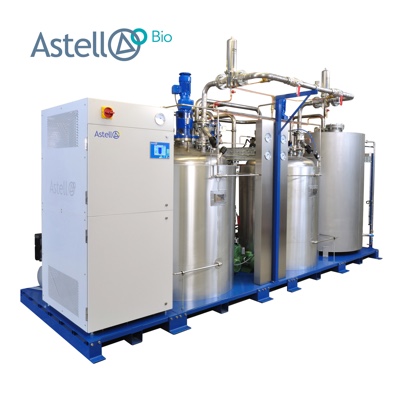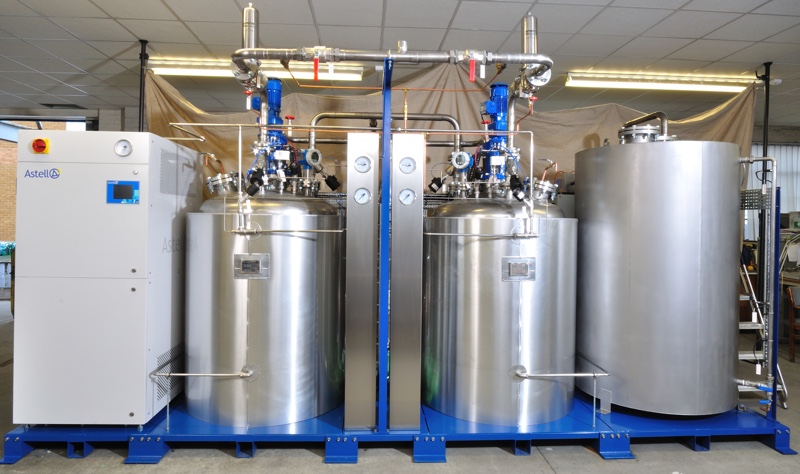Microbiological containment laboratories, whether research, healthcare or production facilities, must meet the requirements of the Biological Agents Directive which, in UK legislation, means the Control of Substances Hazardous to Health (COSHH) Regulations. For those unfamiliar with containment levels, CL2 is probably the most commonly used.
It is suitable for a broad range of clinical, diagnostic and research work with biological agents which, although capable of causing disease, only present a low-to-moderate risk to employees and are unlikely to spread to the community, with effective treatment or prophylaxis being available.
Examples of agents that must be handled at CL2 include common clinical isolates such as Staphylococcus aureus, respiratory syncytial virus and Toxoplasma spp. CL3 is the highest containment level in common use in the UK and must provide adequate protection to employees and others from laboratory work with biological agents which are capable of causing severe disease and pose a serious hazard to employees because of their infectivity and/or route of transmission. Examples of such agents include Mycobacterium tuberculosis, hepatitis B (when being cultured) and Naegleria fowleri.

Making your effluent safe
One of the main areas of concern is liquid effluent decontamination. Effluent types can vary but often include sanitary installations such as toilets, water from sinks and washing facilities and any unsterile exhaust water from sterilisers and process equipment within the containment area. They can contain significant levels of pathogens so must be decontaminated prior to discharge to sewer or surface water.
Effluent decontamination systems (EDS) are designed to treat these wastes to ensure that any organisms that might be present are rendered safe. Legislation or codes of practice may demand an EDS, or it may be required as the result of an internal risk assessment. However, many ethical organisations install one simply to demonstrate to their neighbours that their operations are safe, and to promote community support.
Chemicals or heat?
Pathogens can be killed by a variety of chemical disinfectants such as chlorine dioxide, sodium hypochlorite, hydrogen peroxide and a range of organic chemicals, many of which are highly toxic. These can present a hazard to operators and, should they be released into the environment, to wildlife and the general public.
To be certain that effluent is safe it is necessary to ensure that there is excess disinfectant remaining in the wastewater after the requisite contact time, which is dependent on the chemical being used. But the excess disinfectant then has to be neutralised prior to discharge of the wastewater to prevent possible environmental impact. This means careful chemical monitoring – not always simple – and control.
Chemical disinfectants are effective against bacteria only if they can reach the cell wall. Solids in the effluent can shield bacteria from the disinfectant chemical, rendering it ineffective.
The best alternative to chemical disinfection is heat sterilisation. Heat has long been used for microbiological control in the food, pharmaceutical and healthcare industries. Pasteurisation (80°C) kills most common bacteria whilst sterilisation (121°C) kills all forms of life, including viruses, bacteria, fungi and spore forms. Because all the effluent, including any solids content, is heated uniformly, there is no escape for the pathogenic organisms.
Temperature is a simple and reliable online measurement that can be readily calibrated against a standard thermometer and, of course, heat decontamination is completely chemical free. This makes control and validation very much easier than with chemical systems.
Batch or continuous?
EDS systems are usually batch processes, using one or more jacketed pressure vessels/kill tanks heated by high pressure steam. Liquid waste is pumped or gravity fed into the pressure vessel until the level reaches a preset point which starts the heating/sterilisation cycle and, in a multi-tank system, the incoming flow is diverted to another tank until it too is at the correct level to begin the process.
The temperature of the kill tank contents is raised to 121°C or 135°C and maintained for a preset time to effect sterilisation. The sterilised effluent is then cooled to the allowable discharge temperature (normally 60°C) before the contents of the tank is discharged. For systems where the effluent flow is unpredictable, a holding tank may be required.
All EDS systems must be able to be validated and although the temperature is constantly monitored throughout the process additional measures may be needed. This is usually carried out by injecting a known solution of Bacillus Geostearothermophilus spores at the start of the process and then taking samples from the discharge to send away for testing. This will give the confidence that the process is effective.
For continuous high flow rates in the range of 1000 L/h, it may be that the required number or size of kill tanks makes a batch decontamination system impractical or uneconomic. In these cases, a continuous flow EDS system may be the answer.
Continuous heat sterilisation systems do not have kill tanks as such. Liquid waste is collected in a buffer tank, to allow for variations in the incoming flow rate, and then pumped at a constant flow through a series of heat exchangers. The first pre-heats the effluent using the hot treated effluent and recovering up to 80% of the heat energy.
The second heat exchanger raises the temperature to 140°C, normally using pressurised steam, with a retention time of 1 minute to provide sterilisation. Finally a third heat exchanger cools the effluent leaving the pre-heater to discharge temperature using either air or cooling water. However, if solids are present in the liquid, they may foul the heat exchangers and block the relatively small bore pipework in continuous systems, so batch processing is more suitable for effluents, which contain solids.

Critical design experience
EDS systems are critical to the safe operation of a contained facility, so it is imperative that they are constructed to the highest standards of quality and reliability. The principle of heat sterilisation is straightforward enough, but every contained facility is different in such aspects as layout and space, utility availability, effluent volume and the pattern of production (instantaneous flow rate, frequency and duration).
Consequently, most EDS systems are bespoke to suit the application and the number and size of the vessels/tanks optimised for individual customers’ exact requirements. This approach requires experience and expertise in design and project management.
Astell’s experience in designing, constructing and installing heat sterilisation systems covers many years, and their advanced Colour Touchscreen controller systems, which includes password protected programming and datalogging for validation, has a long, proven track record.
As each containment facility is different and requires a customised effluent decontamination system, visit AstellBio to understand the decisions to be made specific to your application.
